Prada's Triangle Trademark Bid Faces Partial Setback: EUIPO Highlights Lack of Distinctiveness
In a significant decision for the fashion industry, the European Union Intellectual Property Office (EUIPO) Board of Appeal upheld the partial refusal of Prada S.A.'s application to register its repeating triangle pattern as a European Union Trade Mark (EUTM). The case, designated as R-827/2023-2, underscores the stringent standards applied to pattern marks and the challenges luxury brands face in securing trademark protection for designs that may be perceived as decorative rather than distinctive.
Background of the Application
On 7 April 2022, Prada filed an application (EUTM No. 018683223) seeking to register a pattern mark consisting of a regular arrangement of black and white isosceles triangles, forming a repeating pattern. The application covered a broad range of goods and services across multiple classes, including but not limited to cosmetics, clothing, accessories, and retail services.
The EUIPO examiner raised objections under Article 7(1)(b) of the EUTMR, citing a lack of inherent distinctiveness. The examiner concluded that the pattern would be perceived by the average consumer as a common decorative element rather than an indicator of commercial origin. Consequently, the application was partially refused, particularly concerning goods and services where such patterns are commonplace.
Prada's Arguments on Appeal
Prada appealed the examiner's decision, arguing that the triangle pattern is intrinsically linked to the brand's identity and has been extensively used and promoted. The company emphasized that the specific arrangement of the triangles, along with the striated and granulated texture, created a distinctive visual effect that should qualify for trademark protection. Prada also contended that the pattern's consistent use across various products had led consumers to associate it with the brand, thereby fulfilling the essential function of a trademark.
EUIPO Board of Appeal's Decision
In its decision dated 19 December 2023, the EUIPO Board of Appeal upheld the partial refusal. The Board acknowledged Prada's arguments but maintained that the pattern lacked inherent distinctiveness for the majority of the goods and services applied for. The Board reasoned that the pattern, composed of simple geometric shapes arranged in a regular manner, did not significantly deviate from common patterns used in the relevant sectors. As such, consumers would likely perceive it as a decorative element rather than a source identifier.
Without an express reliance on acquired distinctiveness under Article 7(3) EUTMR, the Board was unable to assess whether Prada’s triangle pattern had, through use, come to function as a trade mark. As a result, the application was partially refused. When a mark lacks inherent distinctiveness, particularly in the case of simple geometric or decorative patterns, a proactive approach is essential. Applicants must anticipate this deficiency and affirmatively invoke Article 7(3), accompanied by robust evidence demonstrating that the sign has acquired distinctiveness across the entire European Union.
Such evidence typically includes consumer surveys, sales figures, advertising expenditure, and market penetration data.Importantly, this information must collectively show that consumers throughout all Member States have come to associate the sign with a specific commercial origin. This is a high threshold, and one that has proven difficult to meet even for globally recognised fashion houses.
The Board’s emphasis on the absence of a 7(3) claim suggests Prada may have had a stronger case had it taken this route. Yet the outcome of pursuing acquired distinctiveness is far from guaranteed. As seen in the General Court’s rejection of Louis Vuitton’s Damier Azur mark, and the EUIPO’s refusal of Burberry’s check pattern for virtual goods, even iconic branding does not exempt applicants from the evidentiary burden. In both cases, the marks were deemed insufficiently distinctive across the entire EU, despite strong consumer recognition in some regions.
These outcomes reflect the EUIPO’s consistently cautious approach to pattern marks. For fashion brands, they reinforce the need for strategic preparation: demonstrating acquired distinctiveness is not only a legal formality, it is a demanding evidentiary exercise that must be carefully constructed to meet the Office’s high standards.

